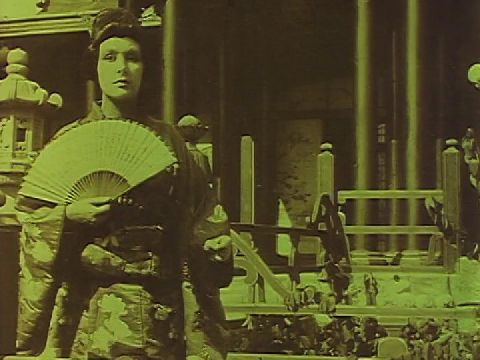Harakiri (1919) 

Director: Fritz Lang
Cast: Paul Biensfeldt, Lil Dagover, Georg John
Synopsis: The daughter of the Daimyo marries a European officer and has his child. Then he returns to Europe for several years but brings his new wife with him when he returns to Japan.
Harakiri is a silent German retelling of Puccini’s enduringly popular opera Madame Butterfly without, of course, the operatic warbling, and it’s an early entry in famed director Fritz Lang’s CV. The movie certainly has some of the hallmarks of having been directed by a novice not yet sure of his talent: erratic — but mostly funereal — pacing, moments of editing which confuse the audience rather than inform it, and a general lack of flair in almost all departments. In all it gives little indication of the status Lang would later enjoy.
German actress Lil Dagover who, despite painting her eyebrows halfway up her forehead looks no more Japanese than I do, plays O-Take-San, the daughter of a Daimyo (roughly Japan’s equivalent of a British Lord). The habit of the Daimyo (Paul Biensfeldt) of returning from journeys to the West with souvenirs is deeply displeasing to the xenophobic Buddah Priest (Georg John — Metropolis, M) who expects O-Take-San to become a priest of the Forbidden Garden, entrance to which is prohibited to Europeans. That doesn’t stop American Naval officer Olaf J. Anderson (Niels Prien) from scaling the wall and making the moves on young O-Take-San, though.
When her father commits hara-kiri on the orders of the Emperor, O-Take-San takes refuge in a nearby tea house where she is rescued from the Priest by Anderson, who marries her. However, soon after, Anderson returns to America. O-Take-San believes he will return within three years, after which Japanese laws decree that she will be considered to be divorced. But after four years there is still no sign of Anderson, who doesn’t know that O-Take-San has given birth to a son, and the Buddah Priest is start to make some menacing moves on her.
Perhaps the most impressive aspect of Harakiri is the set design which is rather elaborate for the era, but given the mediocre quality of all other areas of the movie, that isn’t really saying a lot. The acting is poor, which is as much down to Lang’s direction as to any deficiencies on the parts of the actors; everyone moves very slowly and deliberately and, with the exception of Dagover, over-emphasises every emotion. The perspective shifts quite noticeably around the halfway mark with the previously heroic Anderson ultimately exposed as an emotional coward who cares little about his Japanese wife, and it’s a shift that is quite jarring. Overall, Harakiri has to be considered a failure, even for a relatively inexperienced director.
(Reviewed 31st May 2014)
httpv://www.youtube.com/watch?v=81fMGFXPhuM
